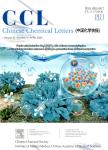Biomaterial-induced macrophage polarization for bone regeneration
作者机构:Department of OrthopedicsGuizhou Provincial People’s HospitalGuiyang 550000China Medical CollegeGuizhou UniversityGuiyang 550000China Department of Materials Science and EngineeringTranslational Tissue Engineering CenterJohns Hopkins UniversityBaltimoreMD 21218United States Department of Endocrinology and MetabolismGuizhou Provincial People’s HospitalGuiyang 550000China The Central LaboratoryGuizhou Provincial People’s HospitalGuiyang 550000China Department of OrthopedicsThe Affiliated Hospital of Guizhou Medical UniversityGuiyang 550000China
出 版 物:《Chinese Chemical Letters》 (中国化学快报(英文版))
年 卷 期:2023年第34卷第6期
页 面:164-171页
核心收录:
学科分类:08[工学] 080501[工学-材料物理与化学] 0805[工学-材料科学与工程(可授工学、理学学位)] 080502[工学-材料学] 0703[理学-化学]
基 金:supported by the National Natural Science Foundation of China(Nos.81960404,81960401 and 82060308) Guizhou Province Science and Technology Project(No.1429) Guizhou Provincial high-level innovative talents of Science and Technology Department(No.GCC037–1)
主 题:Macrophage polarization Biomaterial Nano materials Bone regeneration Immune response
摘 要:As the main target cells of immune regulation,macrophages play an important role in the bone regeneration *** can be polarized into the M1 and M2 types under the stimulation of different *** have proinflammatory and anti-inflammatory effects,respectively,and play key roles in different stages of bone *** ratio of M1 to M2 macrophages can be regulated by immunomodulatory biomaterials to promote bone repair and *** this paper,we review the recent literature on the chemical,physical and biological properties of biomaterials and the regulation of macrophage polarization under the influence of other *** also cover new methods for preparing immunomodulatory biomaterials for bone *** paper will provide new design ideas for the development of biomaterials with immunological properties and will support the clinical translation of bone-related medical biomaterials.



